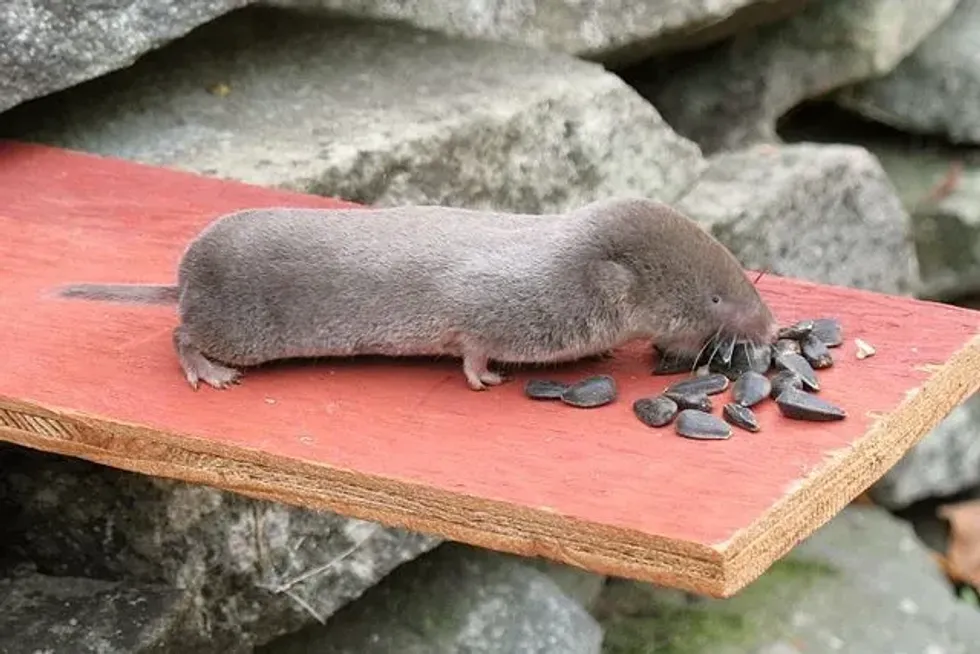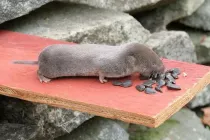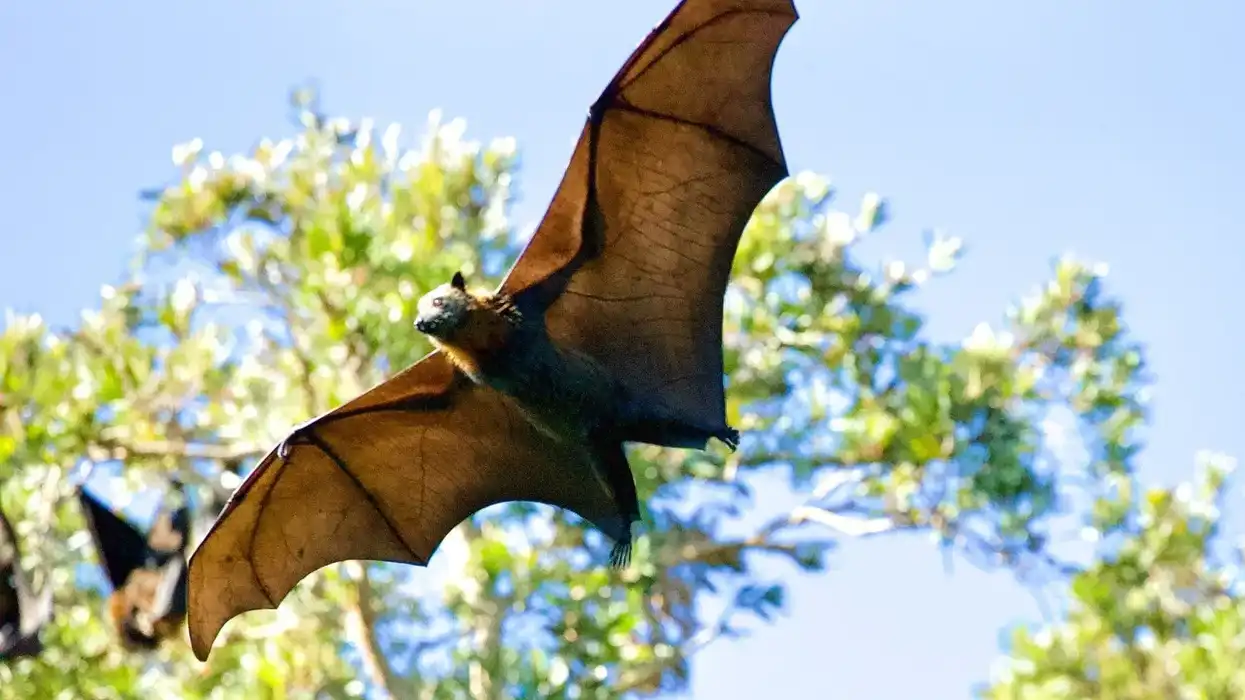The Northern short-tailed shrew (Blarina brevicauda) is the biggest shrew in the species Blarina to be found in the Northern region of North America. It can often be found in different varieties of habitats like broadleaved, pine forests among shrubs, hedges, and grassy riverbanks too.
These creatures are good with their sense of touch as their sense of smell is apparently to be poor compared to similar-looking animals.
Their eyes are partially covered making their vision limited to the detection of light. There is sexual dimorphism in the species, for example, as the body size in males is slightly bigger than females and the tail is short in comparison to the body in both.
Interestingly, they are among the few venomous mammals found in the world. The saliva of the Northern short-tailed shrew contains the venom named Kallikrein which is like a protease that paralyzes or makes the prey numb.
Unlike other shrews, the Northern short-tailed shrew prefers to spend most of its time below ground.
Read on to learn more about this fascinating shrew. For more animal facts, take a look at Border Collie Lab Mix facts and Great Dane Lab Mix facts.
Northern Short-Tailed Shrew Interesting Facts
What type of animal is a Northern short-tailed shrew?
While the furry little creatures may look like rats or mice, they are not one and the same. Actually, shrews are small mammals and are classified as insectivorous and not rodent.
What class of animal does a Northern short-tailed shrew belong to?
Every shrew including the Northern short-tailed shrew belongs to the class of mammal as they directly give birth to their offspring.
How many Northern short-tailed shrews are there in the world?
Shrews are presently more than 385 species throughout the world and among many of these species, most of them appear to look similar having pointy snouts, streamlined body, and gray color.
While the Northern short-tailed shrew might be considered as the most commonly found mammal present throughout the eastern United States, there is not an exact count of how many shrews are present in the world.
Where does a Northern short-tailed shrew live?
Northern short-tailed shrews are the most common inhabitant of the Northern part and the Southern part of the USA mostly where there are plenty of bushes and damp, as well as in Canada and also in parts of Nova Scotia to the central part of Nebraska.
As most of these places are terrestrial areas and it is the best survival place for these creatures.
What is a Northern short-tailed shrews habitat?
Northern short-tailed shrews love places such as damp bushy woodlands, bushy bogs, marshes, weedy bushes, and some of the bushy borders of fields. Also, they are easily found in nearly all terrestrial habitats because these kinds of areas are full of invertebrates for easy food.
They construct their nests in tunnels or under logs and rocks which is another good reason for them to live in these areas. These places are full of enough vegetation which is needed by them to provide cover.
Who do Northern short-tailed shrews live with?
Usually, shrews prefer to live alone. They are the kind of animal that lives and forages alone, the only exception when they might live with other shrew is when they are mating or the breeding season is taking place. Otherwise, they strive alone.
How long does a Northern short-tailed shrew live?
Northern short-tailed shrews can live as long as three years. The most important time for living/surviving for them is in the first year after they are born because most of them don't reach adulthood.
How do they reproduce?
Northern short-tailed shrews reproduce in their own built nests and these nests are built out of shredded grass or leaves and placed in tunnels or under logs and rocks. They are almost 150-250 mm long and approximately 150 mm wide.
Mostly the breeding season is from early spring to early fall, and females usually have two litters in a year, but they sometimes have three.
The pregnancy lasts from 21-22 days. Almost 3-10 shrew pups may be born in a littler, and between five and seven young is most common.
What is their conservation status?
Blarina brevicauda, commonly known as Northern short-tailed shrews, are easily found in their habitat and are popular, especially in the areas surrounding the Great Lakes. This makes their conservation status Least Concern as they are at no risk of being endangered.
Northern Short-Tailed Shrew Fun Facts
What do Northern short-tailed shrews look like?
Northern short-tailed shrews are somewhat similar looking to rats but there's a little difference in their face and tail as the face of shrews are more pointed out and their tail shorter. Their eyes are small, and their ears are almost completely hidden by the fur.
With shrews, males are slightly larger than females. Their fur is velvety and soft, and the color is almost uniformly slate gray, with the underparts of the fur being only slightly paler.
How cute are they?
Although shrews are considered to be similar to rats, shrews are pretty cute. It is mostly a matter of perspective as well, as some people may find them cute and some may not, just as how some have pet rats and others would never dream of such a thing.
Shrews, however, are wild animals that should not be kept as pets. Unlike dogs, cats, or even rats, they will never develop an affectionate rapport with humans.
How do they communicate?
Northern short-tailed shrews, as they don't have any kind of working sense, communicate through odor. They release a musky odor from scent glands which are present on their belly and sides.
It is thought that this is also used to mark their territories with scent, as all the other animals do, but this is just a theory since, as mentioned earlier, they have very bad senses.
Northern short-tailed shrews make a variety of sounds such as chirps, buzzes, and twitters. They make these sounds during courtship and also when fighting with other individuals.
How big is a Northern short-tailed shrew?
Northern short-tailed shrews are not bigger in comparison to other animals of similar species, such as mice or rats. Instead, sometimes they are smaller as the average size of the shrews is 75-105 mm long from their head to the base of their tail and the tail length ranges from 17-30 mm.
How fast can a Northern short-tailed shrew run?
Short-tailed shrews exhibit the typical pattern of shrew locomotion. They run, with sudden stops and starts, and they walk with rapid, twitchy steps. The exact speed at which they can run is not known.
How much does a Northern short-tailed shrew weigh?
Northern short-tailed shrews weigh between a range of 18-30 g and so the average weight of them is somewhere around 21.6 g.
What are their male and female names of the species?
In general, there are no names for the male and female Northern short-tailed shrew. The only distinction between them is of size as the male shrew is slightly bigger than the female shrew.
What would you call a baby Northern short-tailed shrew?
There is no specified name for the babies of Northern short-tailed shrews.
What do they eat?
Northern short-tailed shrews are very frequent and heavy eaters. There is an estimation that they can consume as much as three times more food than their weight per day.
In winter they specifically increase the food they eat compared to their diet in summer in order to keep their bodies warm. They mainly eat invertebrates, such as earthworms, millipedes, spiders, and insects for food. Their diet also consists of other small vertebrates and plant material.
Are they poisonous?
They are actually venomous mammals/insectivorous and not poisonous mammals. There is a big difference between venomous and poisonous animals.
In the Blarina brevicauda, they produce venom in their salivary glands. This venomous saliva is secreted from the submaxillary glands present inside their mouth.
The venom is effective in shunting or numbing the prey and so they are able to immobilize other animals, such as frogs, snakes, mice, birds, salamanders, and other shrews, and can easily prey on them.
To humans, the toxin is a bit painful but they only bite if we try to hold them and the chance of that happening is pretty rare.
Would they make a good pet?
They won't make a good pet. Northern short-tailed shrews are not meant for being a pet. Whilst some people do have pet rats, these animals are totally different, so best advised not to pet them or keep them as pets.
Did you know...
The metabolic rate of the Northern short-tailed shrews is considered to be very high as compared to the other animals alike. This makes them eat at least 80-90% of their body weight otherwise they can be starved to death.
Any kind of sudden shock or noise can easily startle them and in reaction to this, they could jump, faint, or even drop dead.
The Northern short-tailed shrew species are known as the only creature in the world which is venomous and also a mammal.
Are shrews dangerous to humans?
Northern short-tailed shrews have both a negative and positive impact on humans. They don't do any harm to humans and their venom is not at all harmful to us.
Due to them being of insectivorous nature and with a heavy diet, these Northern short-tailed shrews play a major role in controlling the amount of insect and crop pests, especially those who damage it in large quantity.
They also eat snails and mice that damage crops, and this is a real positive impact.
If a human got bitten by them there's no need to worry as the pain only lasts for some hours and shrew venom won't have any harsh effect. These bites are also very rare and usually occur when someone tries to catch them or attempts to hold them in their hands.
How high can they jump?
The Northern short-tailed shrews can jump as high as 110 mm.
How good are their senses?
Almost two of the major senses of Northern short-tailed shrews don't work. Firstly, their eyes because they are so small so they do not have great vision.
Secondly, their sense of smell is fairly poor as the nose does not play an important part or help them in any way. There is one sense which works perfectly at its best and helps them in a lot of work.
This is echolocation and is somewhat similar to what bats and whales use to communicate, detect, and recognize the objects in the environment. This involves sending out multiple ultrasonic clicks and then listening to the returning ones.
By decoding these sounds, they can recognize their environment without the help of any other sense. Similar to other shrews, Northern short-tailed shrews also have a developed sense of touch with high response.
Here at Kidadl, we have carefully created lots of interesting family-friendly animal facts for everyone to discover! Learn more about some other mammals including Victorian Bulldogs, or the Pygmy slow loris.
You can even occupy yourself at home by drawing one on our northern short tailed shrew coloring pages.









